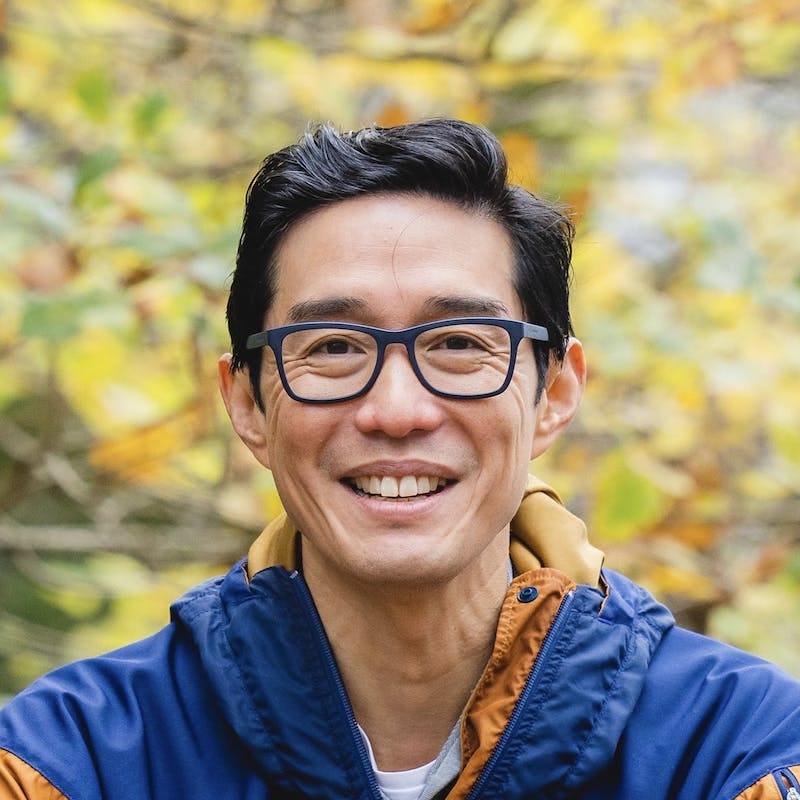Effortless Thursdays #33: Overcoming the overwhelm of big (and small) decisions
11 bottom-up approaches to replace overwhelm with equanimity
The end of Wimbledon tennis for another year always marks the start of the end of summer for me.
It’s a period of sunshine, rest and recuperation before work starts in earnest again in the Autumn. Sometimes that period can feel as languorous as a French “Grandes Vacances”. Or we might have to recuperate by making the most of an August Bank Holiday weekend.
And yet during that period when the sun and heat are encouraging us to luxuriate and take a break, our minds can continue to wander endlessly. Our bodies want to relax, but our brains don’t follow suit. Instead, they prevent us from sleeping, keep us on edge, or won’t let us truly let go.
Big decisions - like deciding to quit your job because “you’ve had enough”, or moving home, or selling your business - have a habit of causing our too-smart brains to focus on every conceivable angle for the “right answer”. And not only once.
We have no respite - no ability to truly relax and switch off - from the insatiable appetite for our brain to uncover those answers like prize truffle-finding pig.
But it’s not just big decisions that trigger this cascade: small decisions can occupy our brain power, too.
So what can we do to take the overwhelm of thinking about decisions and, instead, bring equanimity and balance so that we can take a break from our chattering minds?
This week, I met with one of my mastermind groups, and we came up with some ideas. So here are:
11 bottom-up approaches, and
3 top-down approaches
that help us answer that question.
I hope these approaches help you take the overwhelm of agonising over decisions, and replace it with equanimity and balance, so that your body and mind can take a break this summer
If you want some more help in overcoming the overwhelm when you’re faced with big decisions or an important transition in your life, please get in touch!
Here’s how you can set up a 20-minute conversation with me to explore how to navigate big decisions or major life transitions in a way that feels effortless. 👇
Masterminding solutions for equanimity
Our “WELL Mastermind” is made up of four coaches. We meet every week and have done since 2019.
Each time we meet, one of us is in the “hot seat” and the rest of us coach that person - 3-on-1. Sometimes the topic is a business-related challenge, sometimes it’s personal. But it’s entirely up to the person in the hot seat to decide how they want to use their hot seat time.
Rather than being coached, the person in the hot seat this week wanted to create something mindful, collaborative and connecting as our summer breaks (in the northern hemisphere) began.
Bottom-up vs Top-down
This week’s WELL Mastermind involved each of us sharing the things we do to ground ourselves - to find connection with ourselves and the people around us - whether it’s clients, family or friends - and to bring equanimity into our lives when we’re feeling overwhelmed with too many things on our minds.
As we shared our ideas, what emerged as a theme was that top-down approaches often aren’t as effective to take us out of feeling overwhelmed, or frustrated, or angry.
Top-down - or cognitive - approaches require us to think, and in so doing, our thinking can easily veer back to the very problems we are trying to take a break from.
On the other hand, bottom-up approaches - or ones that start from our bodies (rather than our brains) - can be very effective for taking us out of challenging emotions. They help us step away from our fight-flight-flee responses when we are worried, concerned, or care more than we need to about an outcome. They help our nervous systems relax. And that’s where the equanimity and balance can emerge again.
It doesn’t mean that the top-down, cognitive approaches don’t work. But if you’re sitting at your desk or lying in bed worrying, a bottom-up approach may help you snap out of your rumination more effectively.
How do they do that?
They focus your attention quickly - sometimes instantaneously - on the bottom-up activity you’re doing, and keep it there, helping you avoid veering back to what you’re worrying about.
Tips for overcoming overwhelm
So here is a selection of the best ideas we came up with. I hope you find them useful!
Bottom-up
🍊 Eat an orange mindfully: Hold an orange, smell it, poke your nail in the skin and bring it to your nose. What do you notice about the smell, the taste, what you’re feeling? Peel the orange. Notice the sounds it makes as you pull away the skin. Pop a segment in your mouth. What do you notice about the texture, or the juiciness or dryness?
🤌 Rub your thumb and index finger together: This is best explained with a video.
👆Tapping: Try tapping - also called the Emotional Freedom Technique. Here’s one of the many short videos you can find online that shows you how to tap.
There’s a deeper dive into the psychological benefits here.
👀 Eye blinks: These are especially useful when you’ve been watching a screen for a long time and are suffering from dry eyes or eye strain. Blink rapidly for 10 seconds. Cup your palms over your eyes so that if you opened your eyes, it would be completely dark. Avoid your palms touching your eyelids. After 5 or 10 seconds, uncover and open your eyes slowly.
On my computer, I have an app called Time Out that reminds me at set intervals to blink my eyes or get up and walk about.
🚿 Hot + Cold Shower: Have a hot shower, and then finish off with a cold one. The cold water will help boost your mitochondria.
🦮 Hugging a dog: pets have been shown to reduce stress and anxiety. Part of that is down to co-regulation. This is where your neurons mirror those of the pet you’re with. If your pet is calm and relaxed, your neurons will seek to mirror that state in you, too.
There’s a study that found that emotional contagion exists between dogs and their owners, and even finding a positive correlation between human and dog HRV levels. HRV, or heart rate variability, is a good indicator of how stressed (lower HRV) or relaxed (higher HRV) we are.
👯 Meeting with a trusted group: one of the ways I breezed through the pandemic was to meet in our WELL Mastermind group every week - a space that afforded challenge, understanding and connection. What trusted groups can you reach out to?
🖍️ Colouring in: it’s not just for small people. Colouring in can take your mind into a state of flow.
🧩 Tetris: Playing Tetris has been shown to help relieve symptoms of PTSD by preventing the unpleasant, intrusive memories that develop in some people after suffering a traumatic event.
🏃♀️ Running: this is one of my go-to ways of overcoming overwhelm. But it could be any physical activity you enjoy that you focus on so it distracts you from ruminating.
🪢 Pluck a rubber band: (that’s tied around your wrist). A rubber band is a neat way to remind you of the way you want to think instead of ruminating with worry. You might pluck your rubber band and say out aloud: “I’m a creative, resourceful and whole person”
Top-down
🔎 What’s true?: If you find your mind wandering and making lots of suggestions to you:
“I’m not going to enjoy living abroad”
“I’m not qualified to get that promotion”, or
“My colleagues don’t think I’m doing a good job”,
then ask yourself, “What is true?”.
💪 What strengths? Often when we’re ruminating about decisions, we focus on what we can’t do, or what we’re not good at. The things that you do naturally and really well, are the things that you can use to propel you towards your goals and help you make key decisions when you’re seemingly stuck.
In my case, I’m high in courage and curiosity. So I might ask myself, how might courage help me here? Or what might curiosity offer me?
❤️ Find strategies to satisfy your unmet needs. I’ve written before about how emotions, like anger and frustration, can stem from our fundamental human needs not being met. So, to help you understand what you can do to address the anger or frustration, ask yourself, "What do you need?".
Here’s a recap from Effortless Thursdays #26 when I was sharing how to get your team to be creative by engaging with what your team needs.
Over to you!
All of these techniques are about shifting where we place our attention.
I even suggested to my masterminders that the most effective way, along the lines of plucking a rubber band, is to punch yourself in the face. That will definitely turn your attention away from what you’re worried about (but perhaps replace it with another worry)...
Please share any ideas you have that have worked for you, please post them in the comments below. I’m sure I, and your fellow Effortless Thursday readers will benefit greatly.
Which ones intrigue you? Which ones have you tried?
Which ones didn’t work? Which ones did?
Did you notice a difference between top-down and bottom-up approaches?
That’s it for this week!
As always, I appreciate your feedback on Effortless Thursdays.
If Effortless Thursdays resonated with you, I'd be grateful if you told just one friend to subscribe. They and you can always unsubscribe using the link below.
What did you think of this week’s edition? How can I make it more useful to you? Let me know in the comments, by email, on Twitter or on LinkedIn.
To your health and success!
Eric












I'm not proud to say that I have actually tried to punch myself in face. Regardless of how hard you may be at yourself, I discovered it's a very hard thing to do with conviction. In terms of moving my attention to a good place I choose bike rides in nature these days. That has been working wonders for a long time.
I can completely relate to this. It’s been one of those weeks. I chose not to take my weekly weekend island retreat, which back-fired on me. In trying to avoid one situation, I created a needless no-break week. I had challenges and felt overwhelmed; and I ate a mango and kiwi fruit in wonderment. Can we say that instead of awe? I feel these trippy and slogan words are overused.... back to the article; the “I don’t think I’m going to enjoy living abroad” hit home. I prefer cooler weather countries than the tropics. Finding myself in a conundrum about if I should stay or move, I inspected my values. And top on the list is Family. And it was with open conversations that I then made a decision to “accept” my circumstance. It is not bad. In fact it’s quite good. In understanding equanimity, and trying to practice it, one must remain focused and neutral. Acceptance is a pathway to learning equanimity, along with mindfulness and the like. Great post Eric.